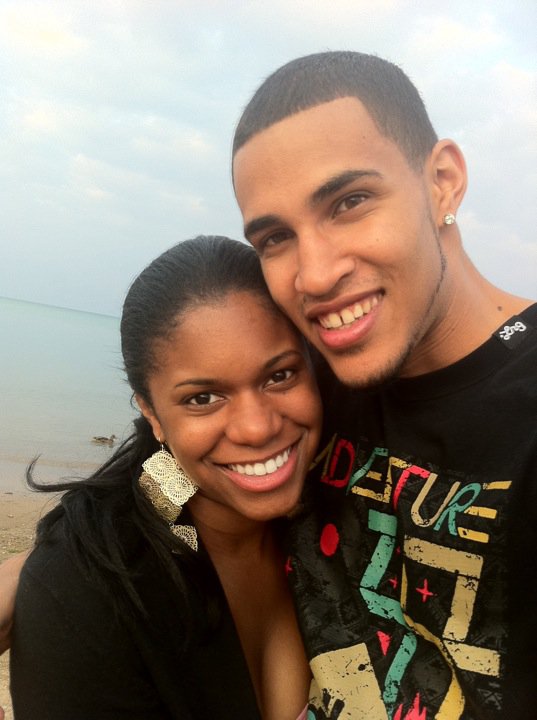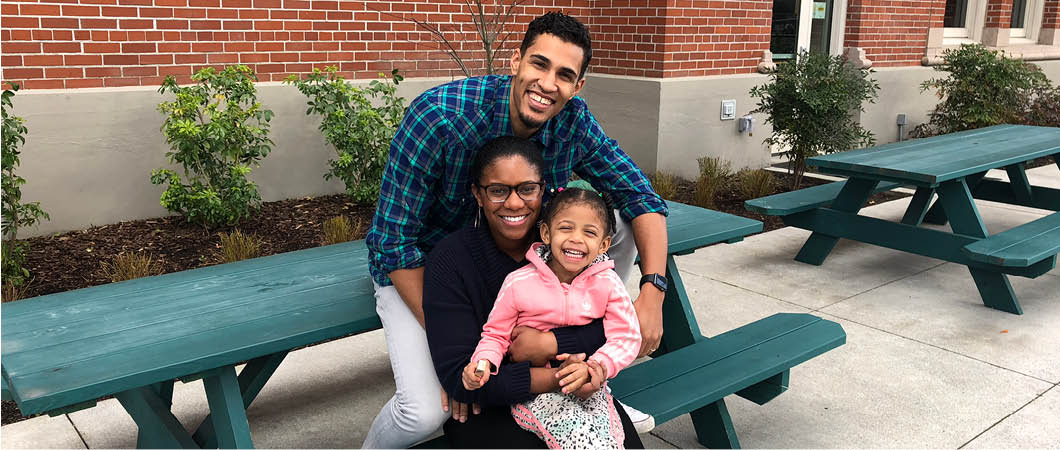Daniel and Camille Trummer married for love, but they also married so they could stay together in the United States.
The couple met in college in Seattle in 2007. Daniel was an exchange student from Germany, Camille a Portland native at school out of state. They had been together for two years when Daniel’s student visa was about to expire.
Like many couples made up of an American and an immigrant, the pair could have split up because of an expiration date on an immigration visa. Instead, they chose a future together.
“This is a decision a lot of people from other countries face. You find someone and you fall in love, but the immigration policies are very strict,” Daniel said. “We made the decision we wanted to stay together.”
At their wedding, celebrating with family and friends, Daniel and Camille didn’t know that the decision to marry would be one of the easiest steps in a long journey through the American immigration system. Over the next several years, they’d learn the hard way that even laws and processes that seem straightforward can take years and thousands of dollars to complete—and all too often require sacrifices of family stability and basic rights.
A complex, expensive system
When it comes to marriage, U.S. immigration law is clear: the spouses of American citizens are entitled to live and work in the country. They qualify for green cards, which grant permanent residence and most of the same rights as citizens.
The process to get a green card is less transparent. It’s confusing, with a stream of complex forms to fill out and no clear timeline for processing them. It’s expensive, costing $1,200 in government fees and often thousands more in travel costs, medical exams and legal fees. It’s unreliable: the government determines if a marriage is based on love and commitment and can reject green card applicants if they don’t believe their story. And the act of applying for a green card removes rights that many people take for granted.
For Daniel, obtaining a green card took four and a half years.

Camille and Daniel in Chicago in 2010.
The couple started the process right after marrying. The first step was for Daniel to get a social security number and temporary working permit so he could work. With the support of an immigration lawyer—and at a cost of $2,000—they filled out the forms and filed the application.
It wasn’t approved for almost a year. The couple had just finished college, and with Daniel unable to work, they felt the financial strain.
“We were newly married, and he wanted to provide for his family, to be a good citizen and work and pay taxes, but he was unable to do all those things because of bureaucracy,” Camille said. “It was hard for him.”
In 2010, the government raised questions about the validity of their marriage. They had to share photos of their life together, including their wedding and their time dating, and also photos of their families and friends interacting. Their family and friends were asked to vouch for them, too.
The long processing period also set Daniel back on his career aspirations. He’d wanted to become a physical therapist, a career requiring two years of graduate school. But because he couldn’t work, he was unable to get the job experience he needed to apply. Without a work permit or social security number, he couldn’t qualify for federal student loans or in-state tuition. And with no credit history, private loans were out of the question, too. All this made Daniel’s dream career unattainable.
At the same time, Daniel wasn’t allowed to leave the country, isolating him from his family and friends back in Germany. He didn’t go home for two years after graduating from college. When he did, he had to ask for permission from the government. They approved his request, but there was no guarantee he could return, in spite of having an American wife, and newly issued temporary green card.
“I was able to stay in the U.S., but I had very few rights,” Daniel said. “You can’t really go anywhere, you can’t move around freely, and it’s hard to work. It almost made it unappealing to be here. This is the country I want to be in, but this process made me question that.”
In the following years, the couple made it work as they waited in legal limbo for the permanent green card to come through. Camille got into grad school in Chicago. They moved there in 2010, and Daniel found work as personal trainer.
Aside from the occasional confirmation of their new mailing address, they heard nothing about the status of Daniel’s application. There was a website where they could pull up basic details, like whether the application was received, but there was no contact person to reach out to with questions and no way to know where they were in the long line of people waiting for their forms to be reviewed.
“You get zero communication from the government about the status of your application,” said Camille. “There’s no way to know where you stand.”
Then one day, almost five years after they married, the permanent green card arrived in the mail. Just like that, the long wait was over.
Chasing the American Dream
Daniel and Camille moved to Portland in 2015, soon after their daughter, Naomi, was born. They wanted to be closer to Camille’s family as they started a family of their own.
Daniel is pursuing a new dream now, working as a police officer with the Portland Police Bureau. “I love my job,” he said. “I love the interactions I have with people every day, be it someone who’s in crisis or someone who’s happy. Every call is different, and the job keeps me on my heels.”
He became a U.S. citizen last year—10 years after they married. Now there was no risk he could be separated from his family.
Looking back, Daniel and Camille feel they were lucky in many ways. They are both college-educated and had the financial means to afford a lawyer, plus financial help from their families. Both of them are fluent English speakers, making the complex forms and confusing bureaucracy a little easier to navigate. He’s from a wealthy European Union country, meaning he likely received less scrutiny.
“My story is not a typical story,” Daniel said. “I come from a certain socioeconomic background—I speak English fluently, and we have the resources. It’s hard to imagine what it’s like for people who don’t have what we have.”
Still, he and Camille see a lot of ways to improve our immigration system.
“It also should be more transparent,” she added. “There should be more communications from our government to people going through the application process. The government should provide financial assistance or payment plans to make the fees more affordable for more people, and the forms should be easier to understand.”
“I’ve always felt like there are more opportunities in this country, and I still feel that way,” Daniel said. “But this was not a reasonable process. The U.S. immigration system should reflect our American values and ideals. Among those values is the idea that strong families build strong individuals and strong societies.”
Immigrants have made Oregon strong for generations.
Join One Oregon and create the Oregon you believe in.


Leave A Comment